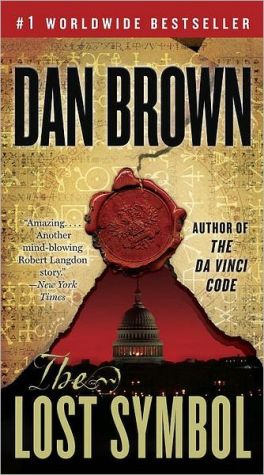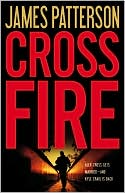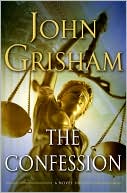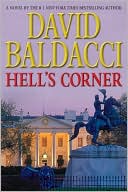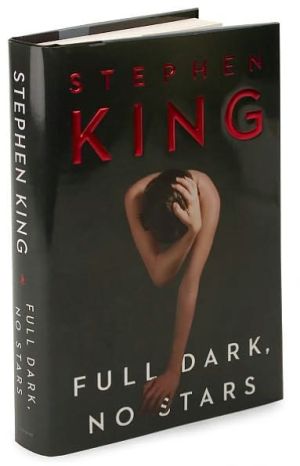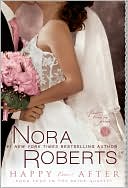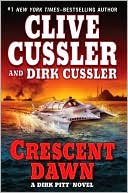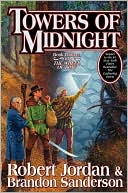The Lost Symbol
In this stunning follow-up to the global phenomenon The Da Vinci Code, Dan Brown demonstrates once again why he is the world’s most popular thriller writer. The Lost Symbol is a masterstroke of storytelling that finds famed symbologist Robert Langdon in a deadly race through a real-world labyrinth of codes, secrets, and unseen truths . . . all under the watchful eye of Brown’s most terrifying villain to date. Set within the hidden chambers, tunnels, and temples of Washington, D.C., The Lost...
Search in google:
In this stunning follow-up to the global phenomenon The Da Vinci Code, Dan Brown demonstrates once again why he is the world’s most popular thriller writer. The Lost Symbol is a masterstroke of storytelling that finds famed symbologist Robert Langdon in a deadly race through a real-world labyrinth of codes, secrets, and unseen truths . . . all under the watchful eye of Brown’s most terrifying villain to date. Set within the hidden chambers, tunnels, and temples of Washington, D.C., The Lost Symbol is an intelligent, lightning-paced story with surprises at every turn. This is Dan Brown’s most exciting novel yet.The Barnes & Noble ReviewFirst, a confession: I liked The Da Vinci Code. This news is even more of a surprise to me than it might be to those who, years ago, heard me quip that I quit reading it because "the moment the albino assassin came through the door, I left." The novel's clunky opening sentence ("Renowned curator Jacques Sauniere staggered through the archway of the Grand Gallery") foreshadows Brown's penchant for stilted turns of phrase, and the most loudly proclaimed facts about ancient rites and secret societies are often nothing of the sort, but by now I understand why the fascination of 80 million readers made The Da Vinci Code such a massive phenomenon.
PrologueHouse of the Temple8:33 P.M. The secret is how to die.\ Since the beginning of time, the secret had always been how to die.\ The thirty-four-year-old initiate gazed down at the human skull cradled in his palms. The skull was hollow, like a bowl, filled with bloodred wine.Drink it, he told himself. You have nothing to fear. As was tradition, he had begun this journey adorned in the ritualistic garb of a medieval heretic being led to the gallows, his loose-fitting shirt gaping open to reveal his pale chest, his left pant leg rolled up to the knee, and his right sleeve rolled up to the elbow. Around his neck hung a heavy rope noose—a "cable-tow" as the brethren called it. Tonight, however, like the brethren bearing witness, he was dressed as a master.The assembly of brothers encircling him all were adorned in their full regalia of lambskin aprons, sashes, and white gloves. Around their necks hung ceremonial jewels that glistened like ghostly eyes in the muted light. Many of these men held powerful stations in life, and yet the initiate knew their worldly ranks meant nothing within these walls. Here all men were equals, sworn brothers sharing a mystical bond.As he surveyed the daunting assembly, the initiate wondered who on the outside would ever believe that this collection of men would assemble in one place . . . much less this place. The room looked like a holy sanctuary from the ancient world.The truth, however, was stranger still.I am just blocks away from the White House.This colossal edifice, located at 1733 Sixteenth Street NW in Washington, D.C., was a replica of a pre-Christian temple—the temple of King Mausolus, the original mausoleum . . . a place to be taken after death. Outside the main entrance, two seventeen-ton sphinxes guarded the bronze doors. The interior was an ornate labyrinth of ritualistic chambers, halls, sealed vaults, libraries, and even a hollow wall that held the remains of two human bodies. The initiate had been told every room in this building held a secret, and yet he knew no room held deeper secrets than the gigantic chamber in which he was currently kneeling with a skull cradled in his palms.The Temple Room.This room was a perfect square. And cavernous. The ceiling soared an astonishing one hundred feet overhead, supported by monolithic columns of green granite. A tiered gallery of dark Russian walnut seats with hand-tooled pigskin encircled the room. A thirty-three-foot-tall throne dominated the western wall, with a concealed pipe organ opposite it. The walls were a kaleidoscope of ancient symbols . . . Egyptian, Hebraic, astronomical, alchemical, and others yet unknown.Tonight, the Temple Room was lit by a series of precisely arranged candles. Their dim glow was aided only by a pale shaft of moonlight that filtered down through the expansive oculus in the ceiling and illuminated the room's most startling feature—an enormous altar hewn from a solid block of polished Belgian black marble, situated dead center of the square chamber.The secret is how to die, the initiate reminded himself."It is time," a voice whispered.The initiate let his gaze climb the distinguished white-robed figure standing before him. The Supreme Worshipful Master. The man, in his late fifties, was an American icon, well loved, robust, and incalculably wealthy. His once-dark hair was turning silver, and his famous visage reflected a lifetime of power and a vigorous intellect."Take the oath," the Worshipful Master said, his voice soft like falling snow. "Complete your journey."The initiate's journey, like all such journeys, had begun at the first degree. On that night, in a ritual similar to this one, the Worshipful Master had blindfolded him with a velvet hoodwink and pressed a ceremonial dagger to his bare chest, demanding: "Do you seriously declare on your honor, uninfluenced by mercenary or any other unworthy motive, that you freely and voluntarily offer yourself as a candidate for the mysteries and privileges of this brotherhood?""I do," the initiate had lied."Then let this be a sting to your consciousness," the master had warned him, "as well as instant death should you ever betray the secrets to be imparted to you."At the time, the initiate had felt no fear. They will never know my true purpose here.Tonight, however, he sensed a foreboding solemnity in the Temple Room, and his mind began replaying all the dire warnings he had been given on his journey, threats of terrible consequences if he ever shared the ancient secrets he was about to learn: Throat cut from ear to ear . . . tongue torn out by its roots . . . bowels taken out and burned . . . scattered to the four winds of heaven . . . heart plucked out and given to the beasts of the field—"Brother," the gray-eyed master said, placing his left hand on the initiate's shoulder. "Take the final oath."Steeling himself for the last step of his journey, the initiate shifted his muscular frame and turned his attention back to the skull cradled in his palms. The crimson wine looked almost black in the dim candlelight. The chamber had fallen deathly silent, and he could feel all of the witnesses watching him, waiting for him to take his final oath and join their elite ranks.Tonight, he thought, something is taking place within these walls that has never before occurred in the history of this brotherhood. Not once, in centuries.He knew it would be the spark . . . and it would give him unfathomable power. Energized, he drew a breath and spoke aloud the same words that countless men had spoken before him in countries all over the world."May this wine I now drink become a deadly poison to me . . . should I ever knowingly or willfully violate my oath."His words echoed in the hollow space.Then all was quiet.Steadying his hands, the initiate raised the skull to his mouth and felt his lips touch the dry bone. He closed his eyes and tipped the skull toward his mouth, drinking the wine in long, deep swallows. When the last drop was gone, he lowered the skull.For an instant, he thought he felt his lungs growing tight, and his heart began to pound wildly. My God, they know! Then, as quickly as it came, the feeling passed.A pleasant warmth began to stream through his body. The initiate exhaled, smiling inwardly as he gazed up at the unsuspecting gray-eyed man who had foolishly admitted him into this brotherhood's most secretive ranks.Soon you will lose everything you hold most dear.\ \ Chapter 1The Otis elevator climbing the south pillar of the Eiffel Tower was overflowing with tourists. Inside the cramped lift, an austere businessman in a pressed suit gazed down at the boy beside him. "You look pale, son. You should have stayed on the ground.""I'm okay . . ." the boy answered, struggling to control his anxiety. "I'll get out on the next level." I can't breathe.The man leaned closer. "I thought by now you would have gotten over this." He brushed the child's cheek affectionately.The boy felt ashamed to disappoint his father, but he could barely hear through the ringing in his ears. I can't breathe. I've got to get out of this box!The elevator operator was saying something reassuring about the lift's articulated pistons and puddled-iron construction. Far beneath them, the streets of Paris stretched out in all directions.Almost there, the boy told himself, craning his neck and looking up at the unloading platform. Just hold on.As the lift angled steeply toward the upper viewing deck, the shaft began to narrow, its massive struts contracting into a tight, vertical tunnel."Dad, I don't think—"Suddenly a staccato crack echoed overhead. The carriage jerked, swaying awkwardly to one side. Frayed cables began whipping around the carriage, thrashing like snakes. The boy reached out for his father."Dad!"Their eyes locked for one terrifying second.Then the bottom dropped out.Robert Langdon jolted upright in his soft leather seat, startling out of the semiconscious daydream. He was sitting all alone in the enormous cabin of a Falcon 2000EX corporate jet as it bounced its way through turbulence. In the background, the dual Pratt & Whitney engines hummed evenly."Mr. Langdon?" The intercom crackled overhead. "We're on final approach."Langdon sat up straight and slid his lecture notes back into his leather daybag. He'd been halfway through reviewing Masonic symbology when his mind had drifted. The daydream about his late father, Langdon suspected, had been stirred by this morning's unexpected invitation from Langdon's longtime mentor, Peter Solomon.The other man I never want to disappoint.The fifty-eight-year-old philanthropist, historian, and scientist had taken Langdon under his wing nearly thirty years ago, in many ways filling the void left by Langdon's father's death. Despite the man's influential family dynasty and massive wealth, Langdon had found humility and warmth in Solomon's soft gray eyes.Outside the window the sun had set, but Langdon could still make out the slender silhouette of the world's largest obelisk, rising on the horizon like the spire of an ancient gnomon. The 555-foot marble-faced obelisk marked this nation's heart. All around the spire, the meticulous geometry of streets and monuments radiated outward.Even from the air, Washington, D.C., exuded an almost mystical power.Langdon loved this city, and as the jet touched down, he felt a rising excitement about what lay ahead. The jet taxied to a private terminal somewhere in the vast expanse of Dulles International Airport and came to a stop.Langdon gathered his things, thanked the pilots, and stepped out of the jet's luxurious interior onto the foldout staircase. The cold January air felt liberating.Breathe, Robert, he thought, appreciating the wide-open spaces.A blanket of white fog crept across the runway, and Langdon had the sensation he was stepping into a marsh as he descended onto the misty tarmac."Hello! Hello!" a singsong British voice shouted from across the tarmac. "Professor Langdon?"Langdon looked up to see a middle-aged woman with a badge and clipboard hurrying toward him, waving happily as he approached. Curly blond hair protruded from under a stylish knit wool hat."Welcome to Washington, sir!"Langdon smiled. "Thank you.""My name is Pam, from passenger services." The woman spoke with an exuberance that was almost unsettling. "If you'll come with me, sir, your car is waiting."Langdon followed her across the runway toward the Signature terminal, which was surrounded by glistening private jets. A taxi stand for the rich and famous."I hate to embarrass you, Professor," the woman said, sounding sheepish, "but you are the Robert Langdon who writes books about symbols and religion, aren't you?"Langdon hesitated and then nodded."I thought so!" she said, beaming. "My book group read your book about the sacred feminine and the church! What a delicious scandal that one caused! You do enjoy putting the fox in the henhouse!"Langdon smiled. "Scandal wasn't really my intention."\ The woman seemed to sense Langdon was not in the mood to discuss his work. "I'm sorry. Listen to me rattling on. I know you probably get tired of being recognized . . . but it's your own fault." She playfully motioned to his clothing. "Your uniform gave you away."\ \ My uniform? Langdon glanced down at his attire. He was wearing his usual charcoal turtleneck, Harris Tweed jacket, khakis, and collegiate cordovan loafers . . . his standard attire for the classroom, lecture circuit, author photos, and social events.\ The woman laughed. "Those turtlenecks you wear are so dated. You'd look much sharper in a tie!"\ \ No chance, Langdon thought. Little nooses.\ \ Neckties had been required six days a week when Langdon attended Phillips Exeter Academy, and despite the headmaster's romantic claims that the origin of the cravat went back to the silk fascalia worn by Roman orators to warm their vocal cords, Langdon knew that, etymologically, cravat actually derived from a ruthless band of "Croat" mercenaries who donned knotted neckerchiefs before they stormed into battle. To this day, this ancient battle garb was donned by modern office warriors hoping to intimidate their enemies in daily boardroom battles.\ "Thanks for the advice," Langdon said with a chuckle. "I'll consider a tie in the future."\ Mercifully, a professional-looking man in a dark suit got out of a sleek Lincoln Town Car parked near the terminal and held up his finger. "Mr. Langdon? I'm Charles with Beltway Limousine." He opened the passenger door. "Good evening, sir. Welcome to Washington."\ Langdon tipped Pam for her hospitality and then climbed into the plush interior of the Town Car. The driver showed him the temperature controls, the bottled water, and the basket of hot muffins. Seconds later, Langdon was speeding away on a private access road. So this is how the other half lives.\ \ As the driver gunned the car up Windsock Drive, he consulted his passenger manifest and placed a quick call. "This is Beltway Limousine," the driver said with professional efficiency. "I was asked to confirm once my passenger had landed." He paused. "Yes, sir. Your guest, Mr. Langdon, has arrived, and I will deliver him to the Capitol Building by seven P.M. You're welcome, sir." He hung up.\ Langdon had to smile. No stone left unturned. Peter Solomon's attention to detail was one of his most potent assets, allowing him to manage his substantial power with apparent ease. A few billion dollars in the bank doesn't hurt either.\ \ Langdon settled into the plush leather seat and closed his eyes as the noise of the airport faded behind him. The U.S. Capitol was a half hour away, and he appreciated the time alone to gather his thoughts. Everything had happened so quickly today that Langdon only now had begun to think in earnest about the incredible evening that lay ahead.\ \ Arriving under a veil of secrecy, Langdon thought, amused by the prospect.\ Ten miles from the Capitol Building, a lone figure was eagerly preparing for Robert Langdon's arrival.
\ From Barnes & NobleDan Brown's first novel since his mega-bestseller 2003 The DaVinci Code now arrives in mass-market paperback. The Lost Symbol propels Robert Langdon on a wild twelve-hour race through Washington D.C. on an urgent search for keys to the secrets of freemasonry, the Founding Fathers, and psychokinesis.\ \ \ \ \ \ From the Publisher“Dan Brown brings sexy back to a genre that had been left for dead . . . His code and clue-filled book is dense with exotica . . . amazing imagery . . . and the nonstop momentum that makes The Lost Symbol impossible to put down. Splendid. . . . Another mind-blowing Robert Langdon story.” —New York Times\ \ “Thrilling in the extreme, a definite page-flipper.” —Daily News (New York)\ “Call it Brownian motion: a comet-tail ride of beautifully spaced reveals and a socko unveiling of the killer’s true identity.” —Washington Post\ “The wait is over. The Lost Symbol is here—and you don’t have to be a Freemason to enjoy it . . . .Thrilling and entertaining, like the experience on a roller coaster.” —Los Angeles Times\ \ “Robert Langdon remains a terrific hero, a bookish intellectual who’s cool in a crisis and quick on his feet . . . .The codes are intriguing, the settings present often-seen locales in a fresh light, and Brown keeps the pages turning.” —Entertainment Weekly\ \ “A fascinating pleasure. . . . Upends our usual assumptions about the world we think we know.” —Newsweek\ \ “A roaring ride. . . . A caper filled with puzzles, grids, symbols, pyramids and a secret that can bestow ‘unfathomable power.’” —San Francisco Chronicle\ \ “Dan Brown is a master of the breathless, puzzle-driven thriller.” —Richmond Times-Dispatch\ \ \ \ Janet MaslinWithin this book's hermetically sealed universe, characters' motivations don't really have to make sense; they just have to generate the nonstop momentum that makes The Lost Symbol impossible to put down…The Lost Symbol manages to take a twisting, turning route through many such aspects of the occult even as it heads for a final secret that is surprising for a strange reason: It's unsurprising. It also amounts to an affirmation of faith. In the end it is Mr. Brown's sweet optimism, even more than Langdon's sleuthing and explicating, that may amaze his readers most.\ —The New York Times\ \ \ \ \ Louis BayardWriters envious of Brown's sales (who wouldn't be?) have devoted much ink to his deficiencies as a stylist. These are still in place…So is Brown's habit of turning characters into docents. But so, too, is his knack for packing huge amounts of information…into an ever-accelerating narrative. Call it Brownian motion: a comet-tail ride of short paragraphs, short chapters, beautifully spaced reveals and, in the case of The Lost Symbol, a socko unveiling of the killer's true identity.\ —The Washington Post\ \ \ \ \ Publishers WeeklyStarred Review. \ After scores of Da Vinci Code knockoffs, spinoffs, copies and caricatures, Brown has had the stroke of brilliance to set his breakneck new thriller not in some far-off exotic locale, but right here in our own backyard. Everyone off the bus, and welcome to a Washington, D.C., they never told you about on your school trip when you were a kid, a place steeped in Masonic history that, once revealed, points to a dark, ancient conspiracy that threatens not only America but the world itself. Returning hero Robert Langdon comes to Washington to give a lecture at the behest of his old mentor, Peter Solomon. When he arrives at the U.S. Capitol for his lecture, he finds, instead of an audience, Peter's severed hand mounted on a wooden base, fingers pointing skyward to the Rotunda ceiling fresco of George Washington dressed in white robes, ascending to heaven. Langdon teases out a plethora of clues from the tattooed hand that point toward a secret portal through which an intrepid seeker will find the wisdom known as the Ancient Mysteries, or the lost wisdom of the ages. A villain known as Mal'akh, a steroid-swollen, fantastically tattooed, muscle-bodied madman, wants to locate the wisdom so he can rule the world. Mal'akh has captured Peter and promises to kill him if Langdon doesn't agree to help find the portal. Joining Langdon in his search is Peter's younger sister, Kathleen, who has been conducting experiments in a secret museum. This is just the kickoff for a deadly chase that careens back and forth, across, above and below the nation's capital, darting from revelation to revelation, pausing only to explain some piece of wondrous, historical esoterica. Jealous thriller writerswill despair, doubters and nay-sayers will be proved wrong, and readers will rejoice: Dan Brown has done it again.\ Copyright © Reed Business Information, a division of Reed Elsevier Inc. All rights reserved.\ \ \ \ \ \ The Barnes & Noble ReviewFirst, a confession: I liked The Da Vinci Code. This news is even more of a surprise to me than it might be to those who, years ago, heard me quip that I quit reading it because "the moment the albino assassin came through the door, I left." The novel's clunky opening sentence ("Renowned curator Jacques Sauniere staggered through the archway of the Grand Gallery") foreshadows Brown's penchant for stilted turns of phrase, and the most loudly proclaimed facts about ancient rites and secret societies are often nothing of the sort, but by now I understand why the fascination of 80 million readers made The Da Vinci Code such a massive phenomenon.\ It's not for the expected reasons. Sure, Robert Langdon's love for semiotics and tweed jackets echo those of another professorial type named Jones, but Dan Brown's hero eschews action for more cerebral approaches, leaving what passes for ass-kicking to his beautiful code-breaking sidekick, Sophie Neveu. The emphasis on "the sacred feminine" in tandem with those millennia-old skeletons crawling out of the Catholic Church's closet echo Katherine Neville's 1988 bestseller The Eight, which also played fast and loose with accepted history (even as it made readers feel smarter) and beefed up the girl power. One could also make the argument that Brown has expanded and enhanced the hallowed master plots of Lester Dent (Doc Savage), taking pulp perfection to a bursting extreme. But for me, when I returned to it recently, The Da Vinci Code exhibited strange premonitions of Stieg Larsson's Millennium novels, The Girl with the Dragon Tattoo and The Girl Who Played with Fire, two books that both emulate and transcend obvious influences.\ Brown and Larsson are both better at crafting narrative engines than sentences, and both manage to hook the reader with seemingly unimportant expository dumps and rambling pages of dialogue. What really links these two authors together, however, is the sheer, unadulterated joy that comes through in their thrillers. Clearly, both love what they write and are made giddy by the dual prospects of educating the reader about their pet projects (Brown on how ancient religious rites permeate society, Larsson on the way society abuses and discards women) and finding clever ways to keep the pages turning. Such fervor can't be faked; readers not only smell the false article a mile away, they put up with a lot -- including frequent turns of cliché -- to get to a taste of the real thing.\ And there lies the rub of The Lost Symbol, a book six years in the making. Its contents appear to be linked inexorably to the years of hype and expectation that formed the wake of The Da Vinci Code. It can't possibly sell as well as its predecessor -- or can it? More pragmatically, can it sell in sufficient quantities to meet the hopes and bottom line of its publisher, Doubleday (now merged with Knopf) and that of its parent company, Random House? The same conglomerate went through similar hype deflation a decade ago with Thomas Harris's Hannibal, which fans justifiably hated for how Harris turned a menacing villain into a cannibalistic hero, the apparent result of an author falling too hard for his creation. (And the less said about Hannibal Rising, the better.)\ No wonder then that the mood at the launch party for The Lost Symbol, held on September 14th in midtown Manhattan's opulent Gotham Hall, was a mix of stately old-world glamour and barely suppressed anxiety, with so many corners of the publishing industry having a vested interest in the book's success. And yet, perversely, as soon as The Lost Symbol blares its opening "FACT" -- about a document locked in the safe of the director of the CIA -- high stakes and impossible expectations are dissipated with the gleeful pop of a balloon.\ Let's get right to the bottom line: The Lost Symbol works, albeit with reservations. It works because whatever mental alchemy Dan Brown needed to turn away from the noise and ramp up his creative signal, to stay away from distractions and focus on the story, takes hold with the opening utterance that "the secret is how to die." From the first sentence, we know what we're in for: there's a traitor in the midst of a sequestered society -- this time, as long-rumored, it's the Freemasons -- whose members include the most powerful people in the land, and our villain hungrily searches for the solution to an age-old proof known to few, doubted by many, and scoffed at by far more. Last time out the quest was for the Holy Grail; now it's for The Lost Word, or maybe, as I kept thinking of it as I turned the pages, L'Elisir Pensiero (for the Italian-challenged, that's the "Elixir of Thought.")\ Once again, Robert Langdon is Our Man Skeptic. Once again, he's summoned by an early-morning phone call at the behest of someone he trusts, this time his longtime mentor Peter Solomon, who besides his father is "the other man I never want to disappoint." But the Smithsonian bigwig has gone MIA, and the pretext for luring Langdon to the nation's capital -- a last-minute substitution to give a lecture -- gives way to more pressing concerns, like reuniting Masonic pyramids with their capstones, cracking codes that mix multiple eras of semiotics, incurring the ire of larger-than-life CIA directors, and staying out of the way of the aforementioned villain, who has a nasty tendency to make grandiose statements, go to extreme lengths to stay celibate (just like The Da Vinci Code's albino assassin -- what's up with that?), and engage in torture tactics possibly condoned by the previous administration.\ The Lost Symbol has much to impart about the mind-body problem as filtered through the work of Peter's younger sister Katherine, who more than dabbles in noetic science, or "leading edge research into the potentials and powers of consciousness", according to the website of the real-life Institute for Noetic Science, based in Northern California. "The truth was that Katherine was doing science so advanced that it no longer resembled science," which means that her personality is a bit lacking when she's in the midst of danger -- as she often is -- but brightens up in flashbacks when she explains how a human soul can be weighed ("High-precision microbalance...Resolution down to a few micrograms"), or when she chides Langdon's for his innate skepticism with regard her chosen field: "Is it not possible that we are still living in the Dark Ages, still mocking the suggestion of 'mystical' forces that we cannot see or comprehend? History, if it has taught us anything at all, has taught us that the strange ideas we deride today will one day be our celebrated truths." The psychology is purely of the pop variety, its predilection for positive thinking glossing over the dark groupthink-y side of communal thought. Katherine's statement about how truths are tempered by changing times, however, bears out in a different way, as pertaining to technology. It's strange and discombobulating -- in a thriller so chiefly concerned with Ancient Mysteries and sacred rites -- to see an iPhone used as an important plot device, Langdon scratching his befuddled head over Twitter ("You know, I still haven't learned how to send a twitter." " 'A tweet,' " [Katherine] corrected, laughing"), and a young woman gushing over Katherine because she's blogged about her. But because Brown has wisely let six years of time elapse between adventures, he's right to acknowledge the leaps and bounds made on the technological scale, even as he takes care not to dwell on them too much.\ While The Lost Symbol operates through Langdon's earnest, dangerously na?ve eyes (the idea that teachers speak openly, his italicized declaration late in the book, and don't teach in code, seems a tad disingenuous from the man who earlier on teased his students with all manner of hidden hints and winking assertions), Brown hasn't lost his sense of self-deprecation and cornball humor. "New York Editor" Jonas Faukman -- the anagrammed version of Brown's editor at Doubleday, Jason Kaufman -- reappears to further the plot, grow frustrated at Langdon's inability to deliver his latest manuscript, and shake his head that "Book publishing would be so much easier without the authors." A woman who recognizes Langdon on the chartered plane to Washington enthuses over his book "about the sacred feminine and the church," only to apologize, commiserating that he must get tired of being recognized: "Your uniform gave you away...[t]hose turtlenecks you wear are so dated. You'd look much sharper in a tie!" Even at the apotheosis of danger, Langdon still has time to muse that "calming visualization had been the only way he had managed to survive a recent stint in an enclosed MRI machine...that and a triple dose of Valium."\ Eventually order is restored, the Solomon family finds unexpected keys, and Langdon gapes anew at the wonders of Washington D.C., from the top of the Monument to the bowels of government chambers; untold connections keep clicking into place. Brown's brew is strong and entertaining, like the Saturday afternoon serials of yore, enough to dissolve the frenetic chaos of real life for a few hours. But The Lost Symbol wages a continuous battle between the cerebral and the visceral, with the balance tipping too often towards the former at the expense of the latter. Saving the world and unlocking its magical mysteries are all well and good, but maybe next time the stakes have to hit Robert Langdon more locally to initiate the man into a more publicly known closed society -- those of the smartest action heroes in popular media. --Sarah Weinman\ Sarah Weinman writes "The Criminalist," a monthly column coming soon to the Barnes & Noble Review, and "Dark Passages," an online crime fiction column for the Los Angeles Times. She blogs about the genre at http://www.sarahweinman.com.\ \ \
